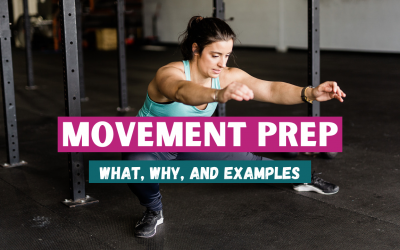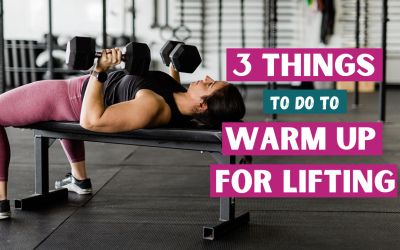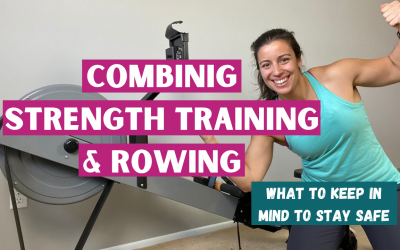Pushing Movements: The Perfect Complement to Indoor Rowing
With all of that pulling you’re doing while rowing, there’s one motion your body isn’t getting stronger at. That’s pushing! Since rowing uses 85% of your muscles, it’s easy to think that’s all you need to do. However, there are other movements your body is missing out on. Using your pushing muscles will help increase your overall fitness level to be able to do the things you love!
Since rowing is mostly a pulling motion, that means pushing exercises will be a great complement to add in on your rowing days. Here’s a little bit more on why you should be doing pushing exercises, how to do them, and how to incorporate them.
Why Push?
If you’ve been following the other strength training posts I’ve done in this mini series, you probably know what I’m going to start with. Not sure what I’m talking about? I have other posts about squatting and deadlifting with your rowing. Check those out if you’re interested!
That’s right, pushing exercises are functional! You need them for everyday life! Pushing something away from you can be as simple as getting up from the ground, or putting something heavier on a tall shelf. Both of these movements use your pushing muscles. Movements like these get easier to do when you get stronger in your pushing exercises, and as you get stronger you’ll decrease the likelihood of injuring yourself doing those everyday activities.
I’ve already mentioned that pushing exercises are a perfect compliment to indoor rowing. One of the major muscle groups that doesn’t get used much in rowing is your chest and the front of your shoulders. To hit these areas, it’s important to incorporate some strength training pushing exercises into your workout routine
How: Push Exercises
There are two types of pushing exercises: horizontal and vertical. Earlier, I gave one example of each that you do in everyday life. Getting up from the ground would be a horizontal push, while putting something on a high shelf is a vertical push. It’s important to know there’s two different kinds, and that you are incorporating both because they use slightly different muscles.
Here are some examples of horizontal and vertical pushing exercises:
Horizontal
Push Up
Bench Press
Chest Press Machine
Incline Bench
Vertical
Shoulder Press
Push Press
Front/Lateral Raise
Dips
Tricep Extension
This certainly isn’t an exhaustive list (not even close!), as there are multiple variations to each movement I’ve mentioned above.
These pushing motions, whether horizontal or vertical, look and move similarly. In all pushing exercises, it’s important for you to keep your elbows close to your body. When your elbows flare out too much, your shoulder is in a bad position which creates a higher likelihood for injury. In a push up, that means having your elbows go back toward your feet instead of out to the side. In something like a shoulder press, that means to keep your elbows in front of you, not out to the side.
It’s also important to use our core in these exercises. When you brace to keep your core tight, this will help you move better (and move more weight!). It also helps keep your back safe, and stops your back from flexing one way or the other.
The horizontal and vertical pushes look very similar in how the elbows move in relation to your body. This is so that your shoulders stay as safe as possible! If you’re not sure what this looks like, watch the video at the bottom of this page.
Incorporating Push Movements
Ready to get those pushing movements stronger? It’s time to find a strength program! This can be a traditional strength program to do alongside a rowing plan, or can be incorporated in workouts where you get on and off the rowing machine. Either way, you’ll want to find a program from a certified coach who knows what they’re doing.
Doing the same pushing movements in the same sets, reps, and weight each and every time won’t get you stronger. You need a progressive plan that pushes you just hard enough to make progress but not too hard to create injury. There’s a science to it, so it’s worth investing in something like this.
One movement you could add on its own, if you’re not looking for a whole strength program, is tempo push ups. These really help your strength gains and will help you get stronger at push ups!
Movement Prep for Lifting and Rowing
Do you currently weightlift? If I were to ask you what your movement prep is, would you be able to tell me? In this post, I'm going to go over what movement prep is regarding weightlifting, why it's important, and go over examples for some of the main lifts to help...
3 Things to Do to Warm Up for Strength Training
In this post, I’m going to be talking about warming up for your strength training workouts. There are really three things that you want to do before you start your lifts. I'm Alicia Clark, and I'm a Master Instructor with UCanRow2 and CrossFit Level 1 Trainer, and...
How to Combine Strength Training and Indoor Rowing Workouts
If you want to up your rowing game with some strength training, then this is the post for you. After purchasing a strength program from a coach, these are some things you want to consider when you're combining your strength and rowing workouts. I'll throw in this...



